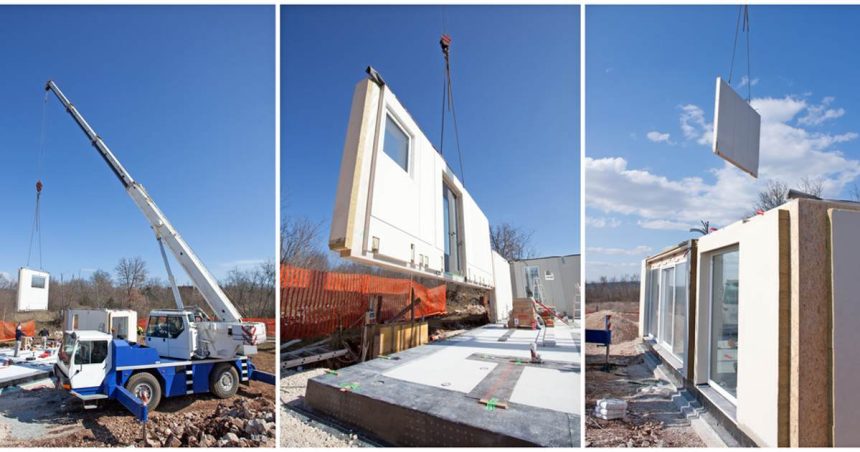Australia’s peak housing body has set out to tackle barriers holding up prefab and modular construction in a renewed effort to speed up home builds.
The Housing Industry Association (HIA) has been pointing to prefab construction as the answer to the nation’s lingering housing woes for decades since modular homes hit the media spotlight back in the early 2010s.
And it’s not hard to see why. With its ability to almost wholly construct homes on the factory floor and cart them piece by piece to their final destination, a recent report by the Blueprint Institute estimated that prefab construction could get final builds up and running up to 30 to 40 per cent faster than onsite methods.
However, for a nation whose construction codes have revolved around those traditional tried and tested on-site tradie methods for the last 50 years, the poor implementation of modular construction has reportedly left prefab homes falling by the wayside – now only accounting for three per cent of all construction.
With the nation scrambling to fill the 200,000 shortfall of homes over the next five years, Blueprint Researcher Sophie Black said that it’s time the industry tapped into prefab’s potential.
“That does not mean that 100 per cent or even 70 per cent of houses or new builds in Australia are going to be modular models … what we’re saying is three per cent is far too low,” she told reporters last month.
And the HIA seem to agree, partnering up this week with the Pre Fab Innovation Hub to dive into the exact barrier holding up mass adoption.
What did they find?
After conducting online surveys with stakeholders and investigating frameworks in successful prefab industries overseas (including Canada, USA and New Zealand), the group said the findings boiled down too many ambiguities for prefab and modular construction, resulting in uncertainties for all involved parties that in turn “prevent greater take-up”.
Before projects even began construction, designers are reportedly faced with barriers around architecture, approvals processes and financing arrangements, particularly for housing, that made the use of prefabrication “more difficult, if not impossible”.
The quality of the off-site construction products also needs to be dialled in as on-site inspection can’t be fully verified for complex prefab and modular units.
Taken altogether, ex-managing director Graham Wolfe said that uncertain regulatory waters have resulted in manufacturers and suppliers “being hesitant to bring new products and systems to market”, effectively placing a cap on the industry’s growth potential.
The future of pre-fab
But there is some light at the end of the tunnel. Based on the project’s findings, the HIA has now made recommendations to federal regulators to implement several changes to the National Construction Code that would clarify certain ambiguous rulings around prefab construction.
And it seems government bodies are on board, with Industry Minister Ed Husic acknowledging the potential to “build more quality homes, quickly” and taking steps to eradicate barriers and red tape at a press conference last month.
It might not be quick, but it’s clear change is on its way, with the project report predicting the latest housing crunch will result in “a vast number of construction projects including housing, will move to off-site and modular or systems-based construction methods over the next 5, 10 and 20 years.”
Managing director of industry policy, Simon Croft, said builders are already using elements built off-site, be it wall and roof frames, modular wall and floor systems and elements such as staircases and retaining walls to tackle tight home building time frames.
“This hybrid approach is likely to continue to increase over the next few years,” he said.







